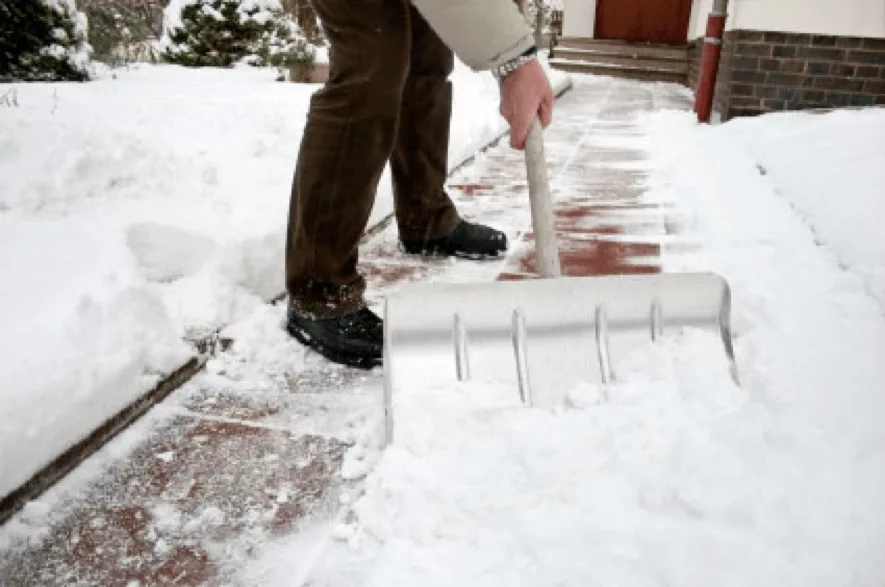Moving in winter has a unique set of challenges not encountered during a spring, summer, or fall move. There is snow, ice, and potentially dangerous weather to contend with and staying safe is priority one. When moving in winter, keep these helpful hints in mind for a safe, warm, and productive move:
Keep the Towels Handy
Moving in winter can make for a messy move. Floors can quickly get wet with snow and ice, making for hazardous moving conditions. Keep a bag of towels in the car to clean up as movers come into the house. Mop up all spills and errant snow as they accumulate, to prevent falls.
Dress in Layers
Whether snowboarding or moving, it’s important during the winter months to monitor body temperature. While moving in winter means there’s no need to worry about whether the air conditioning in the new home works, it does necessitate dressing warmly for traveling and staying toasty but not overheated while moving boxes. Dress in layers to strip down during the move and stay comfortable.
Check the Utilities
The worst thing to find after a long move is that the heat and electricity don’t work. Before packing a single box into a moving van, call up all local utilities to make sure that everything is connected and that it will work on moving day. If possible, take a trip out the day of the move, to ensure that the heat is on and the lights are working. When moving in winter, staying warm is a must. Don’t move without heat and electricity at the new home.
Check the Weather
Planning a big move is often on a schedule, but it pays to be flexible when moving in winter. Check the weather frequently leading up to a move and don’t be afraid to delay if a snowstorm is moving in. Driving a large moving van is difficult enough without slippery roads and blinding snow. Those nervous about driving should hire a moving company to worry about the logistics of moving in winter conditions.
Anticipate Delays
Having mentioned the problems that extreme weather can cause, your moving schedule should include wiggle-room for potential delays and a contingency plan, wherever possible. Moving can be stressful enough, without having a tight deadline to aim for.
Storage Options
One great contingency plan to keep in mind is that of storage, which can be a life-saver if there’s a hiccup in the moving schedule. Tippet-Richardson can provide long or short term secure storage options, in the event of unanticipated delays.
Keep Snow Supplies in the Car
Snow drifts and icy driveways can make moving not just difficult but dangerous. Keep as safe as possible by packing shovels and road salt in the car for easy access. Liberally salt the driveway and stairs into the new home and shovel out a wide path for moving boxes and furniture.
Winterize your Vehicle
Along with keeping the tools mentioned above in your vehicle, it’s important to ensure that the vehicle itself is up to the winter challenge. Ensure that the route has been properly researched and that the correct tires are fitted and have plenty of tread on them. Ensure the vehicle has had a regular service and that the brakes, etc. are all up to par.
Insurance
With all this talk of the extra hazards involved in a winter move, adequately insuring the contents of the move is a wise step. Icy roads and paths can increase the chances of accidents occurring, which could cause damage to possessions. Having insurance set up can give you peace of mind.
Pack with Care
It may be obvious to keep house plants in a warm car when moving in winter but other items aren’t quite that obvious. China pieces can get cracked in extreme cold. Wine bottles can burst. Electronics can handle the cold but condensation can cause damage, so they need to be packed in blankets or something absorbent. Pack with care in the winter, to make sure everything makes it safely to the new home.
Board the Pets
Moving with pets can be a challenge but bringing pets when moving in winter can be a disaster. Throwing the pets in the backyard isn’t an option and it’s difficult to keep them in the home with people coming in and out. To keep it simple, board all pets prior to a move and pick them up again once everything is unpacked. While Fido or Fluffy probably can’t wait to see the new house, letting them take part in the move is a bad idea.
While moving in winter means avoiding moving in the heat, it does have its drawbacks. To ensure that everything and everybody makes it to the new home safely and securely, follow these simple winter moving tips.
Choose Tippet-Richardson
Arguably, the best tip of all… let T-R handle your move. We meet the challenge of every new move with over 95 years of experience, the newest technologies and a team of dedicated experts. Get in touch today!







